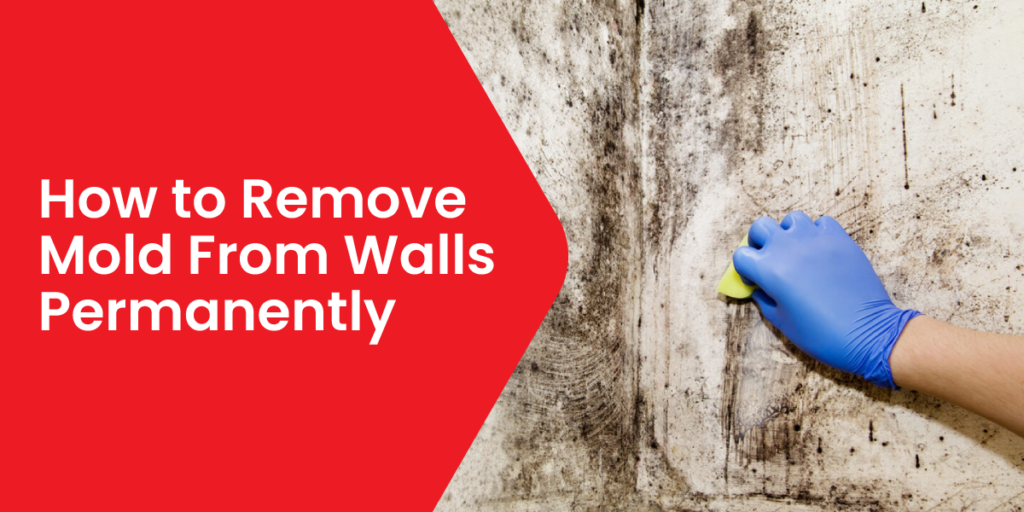Have you noticed strange black, green, or white spots popping up on your walls lately? Or maybe there’s a weird, damp smell that hits you as soon as you walk into a room? That’s not just dirt or old paint—it’s probably mold, and yes, it’s a big problem for many homeowners.
It usually starts small. A little patch in the corner of the bathroom. A few spots behind the furniture. Before you know it, it spreads, smells worse, and might even make you or your family feel sick. Mold is sneaky, and it loves dark, damp spaces like bathrooms, basements, or poorly ventilated walls.
But here’s the good news—you can fix it.
In this guide, we’m going to show you exactly how to remove mold from walls safely, and most importantly, stop it from coming back. We’ll break it all down in easy steps that you can follow, whether you’re doing it yourself or thinking about calling a professional.
So let’s not wait until it gets worse. Let’s handle the mold now and keep your walls and your home clean, safe, and healthy.
What is Mold and Why It Grows on Walls
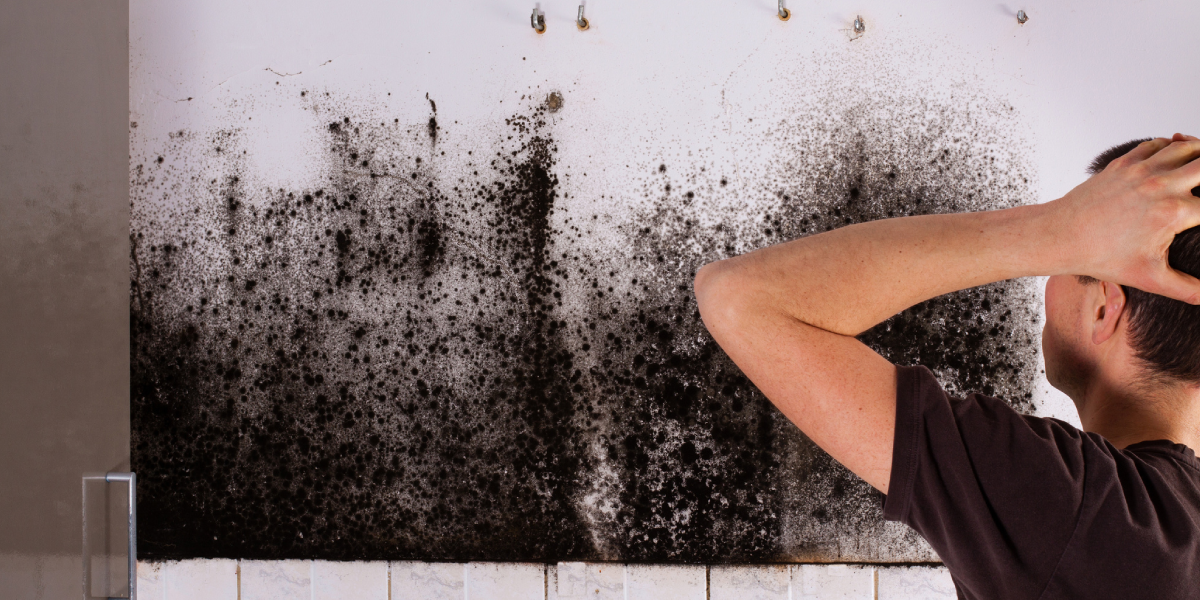
Mold is a kind of fungus that grows in wet or damp places. It loves walls because they often get moisture from leaks, condensation, or bad air circulation.
Common Reasons Why Mold Grows on Walls:
| Cause | Explanation |
| Poor ventilation | Humid air gets trapped and causes moisture |
| Leaky pipes or roofs | Water seeps into the walls |
| Condensation | Warm air meets cold walls (especially in winter) |
| Flood or water damage | Water soaks into the wall materials |
Types of Mold You Might See
| Type of Mold | Color | Dangerous? |
| Black Mold | Dark green or black | Very harmful, needs urgent care |
| White Mold | White, powdery | Less harmful, but still needs removal |
| Green Mold | Green, fuzzy | Can trigger allergies and asthma |
Note: Black mold (Stachybotrys) is very dangerous and should never be removed by hand if it covers a large area or if anyone in the house has breathing problems.
If interested, you can visit this important guide to learn about white mold vs. black mold.
Health Risks From Mold
Mold isn’t just ugly—it can actually make you feel sick. If you’ve been dealing with a runny nose, sneezing, coughing, headaches, feeling tired for no reason, or even skin rashes, mold might be the cause.
It’s even worse for people with asthma or breathing problems. Breathing in mold for a long time can lead to serious lung infections. So if you notice any of these symptoms, it’s really important to deal with the mold quickly.
How to Check for Mold on Walls
Sometimes, mold is easy to spot. Other times, it hides behind wallpaper or under paint.
How to Know If It’s Mold:
- Strange musty, or earthy smell
- Paint is peeling or bubbling
- You see fuzzy patches or discoloration
- Allergies get worse when you’re home.
You Can Also Test for Mold:
- DIY mold test kits (available online or at stores)
- Professional testing – best for large or hidden mold.
When to Call a Pro
You should call a professional if the mold is covering a large area (more than 10 square feet), if someone in your home has asthma or a weak immune system, if you see toxic black mold, or if the mold is caused by serious water damage like a flood or roof leak. In these cases, trying to clean it yourself can be dangerous and might make things worse, so it’s much safer to let a pro handle it.
You can visit this guide to learn how to check for mold after water damage.
What to Do Before Cleaning Mold
Wear Proper Gear:
- Rubber gloves
- N95 mask
- Goggles
- Old clothes (you might throw them away).
Prep the Area:
- Open windows or use a fan
- Cover floors and furniture with plastic sheets
- Keep pets and kids away.
DO NOT:
- Use harsh abrasives on painted walls
- Mix bleach with ammonia (it creates toxic gas).
How to Remove Mold From Walls – Step by Step
Here’s the part you’ve been waiting for: that is how to get rid of mold on walls permanently.
1. Mold on Painted Walls
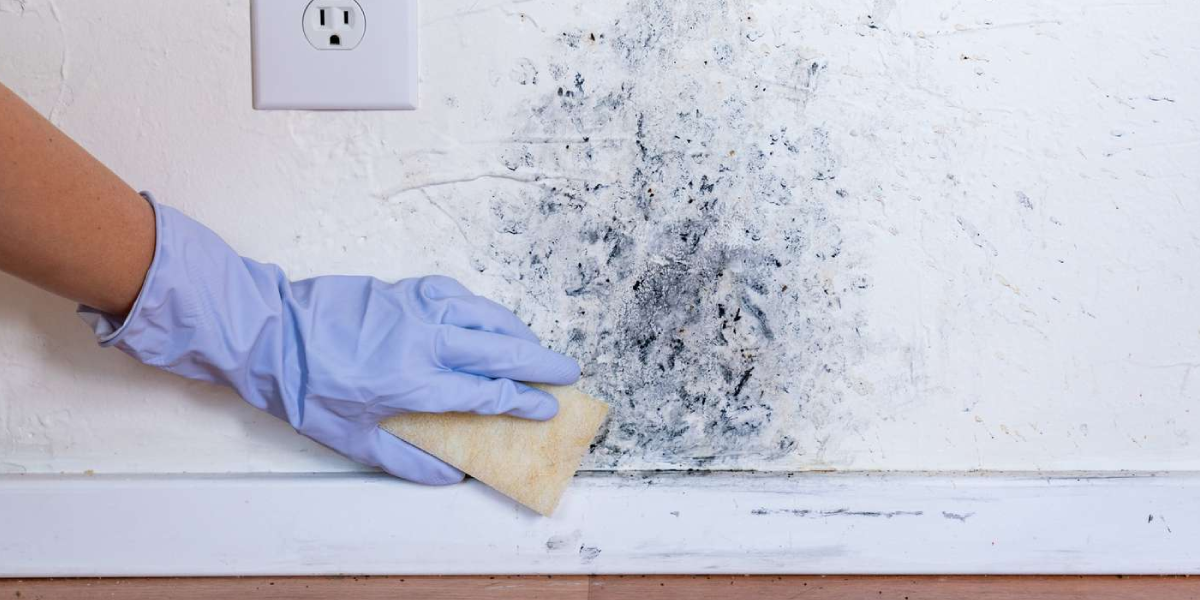
If you see mold on a painted wall, mix equal parts of white vinegar and water in a spray bottle. Spray it right on the mold and leave it for about an hour. Then, gently wipe it with a soft cloth. Don’t scrub too hard, or the paint might come off.
2. Mold on Drywall or Plaster
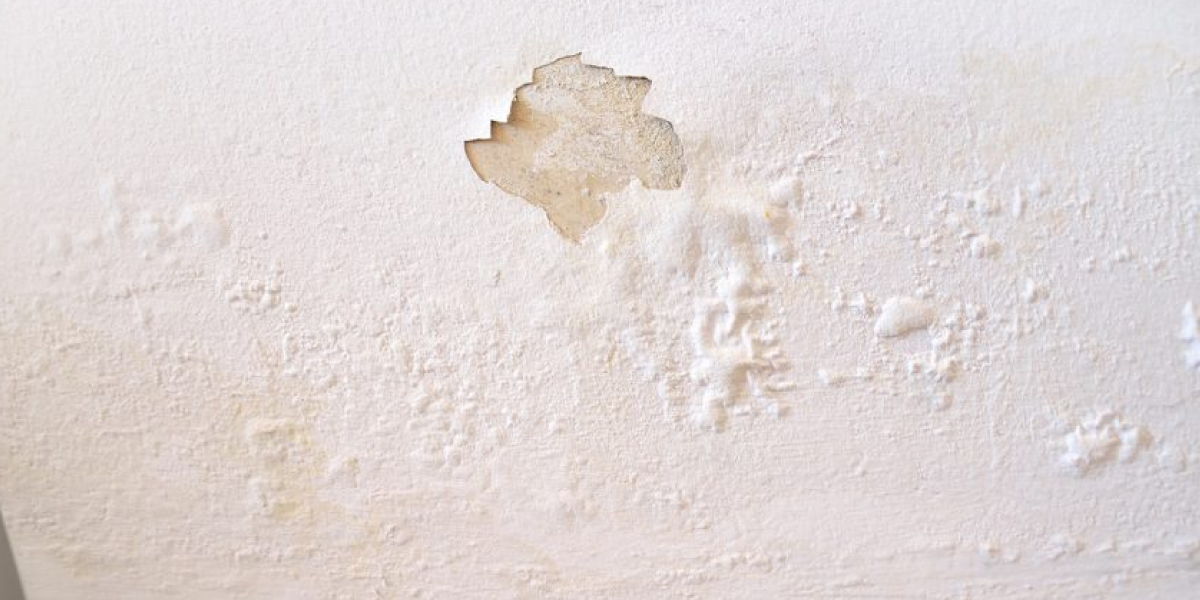
For mold on drywall or plaster, use a mix of 3 percent hydrogen peroxide and water. Spray it on the spot and wait for 10 minutes. After that, gently wipe it using a sponge. Make sure to dry the area completely afterward so the mold doesn’t come back.
3. How to Clean Mold Without Bleach
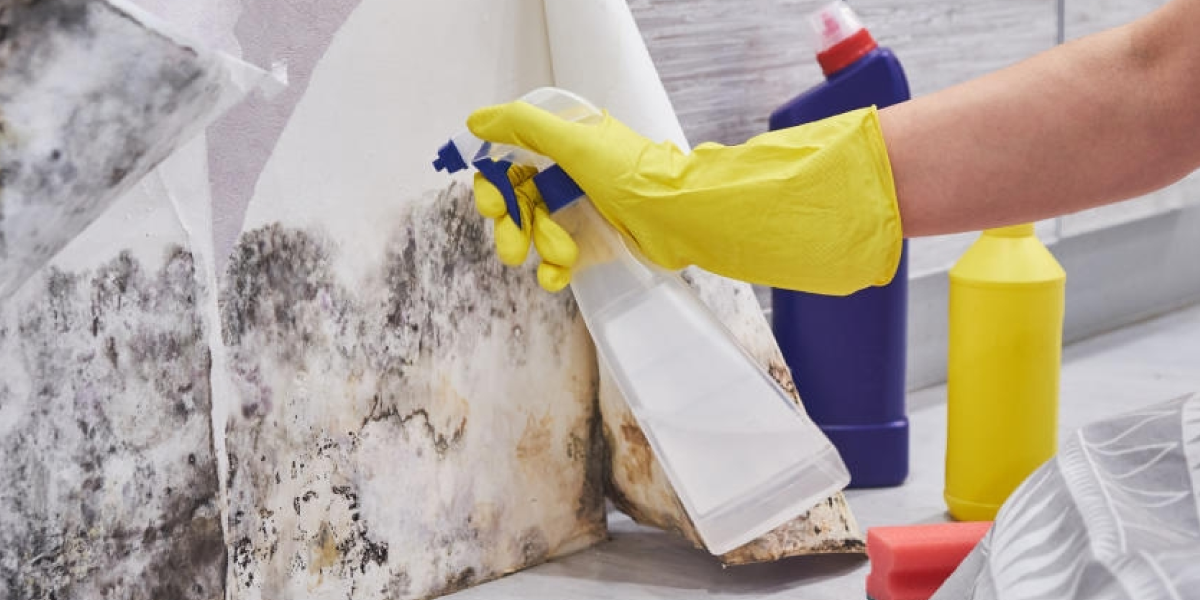
Bleach can sometimes damage paint and make mold go deeper into the wall. A better option is to mix baking soda with water to make a paste. Spread it on the mold, wait for about 30 minutes, then gently scrub it with a soft brush.
In case you go for bleach, you should know the bleach-to-water ratio for mold.
4. Black Mold
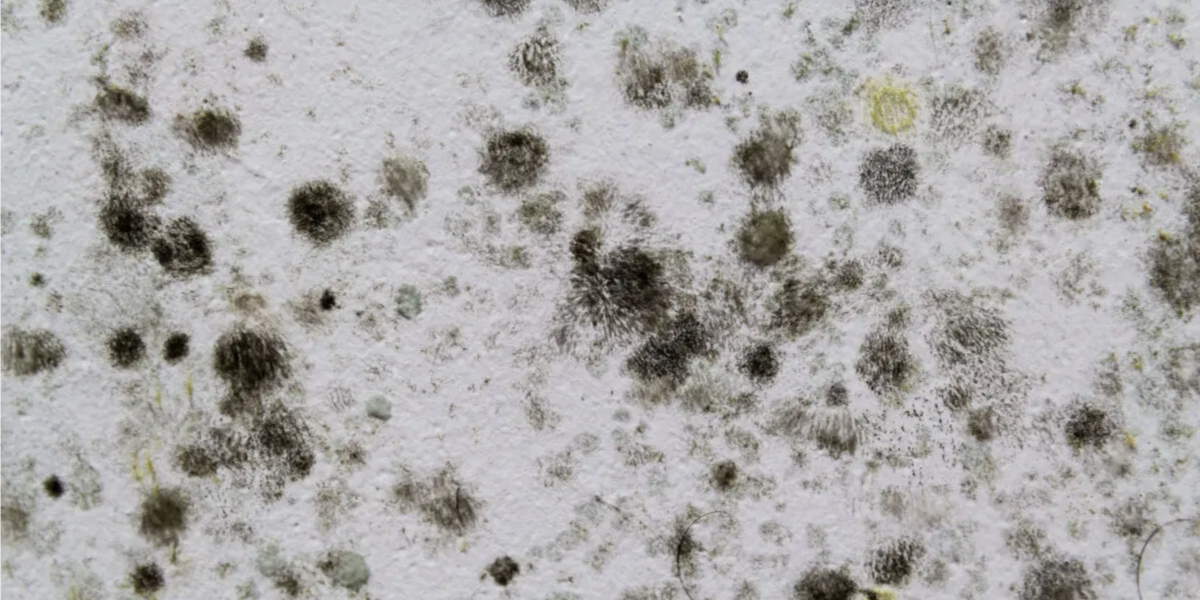
If you’re dealing with black mold in a small, dry area, you can use vinegar or hydrogen peroxide. Spray it on and let it sit for one to two hours. Always wear gloves, a mask, and goggles for extra safety. But if the area is large or makes you feel sick, call a professional right away.
5. Wallpaper or Tiled Walls

To clean mold from wallpaper, gently wipe it with a sponge soaked in vinegar or mild soapy water. Don’t use too much water, or the wallpaper might peel. For tiled walls, you can scrub the grout lines with a small brush to remove mold.
Deep Cleaning and Post-Cleaning Tips
After the Mold is Gone:
| Task | Why It’s Important |
| Clean the area thoroughly | Removes leftover spores |
| Use mold-killing spray | Prevents regrowth |
| Dry the area completely | Mold loves moisture |
| Wash cleaning tools or throw them away | To stop spores from spreading |
How to Stop Mold from Coming Back
Mold often comes back if you don’t fix what caused it in the first place. To stop it for good, try using a dehumidifier to keep the room’s humidity below 50 percent. Open your windows often to let in fresh air, and if you have a bathroom, install an exhaust fan to get rid of moist air.
Fix any leaky pipes or roofs quickly so water doesn’t sneak in. You can also paint your walls with mold-resistant paint, especially in damp areas like bathrooms and kitchens. Lastly, check your walls for any wet spots or condensation and wipe them dry as soon as you see them.
Room-by-Room Mold Help
Bathroom Mold:
- Most common spot due to steam and water
- Use exhaust fans and squeegee tiles after showers.
Basement Mold:
- Caused by damp ground or poor airflow
- Use a dehumidifier and check for cracks in the walls.
Bedroom or Living Room Mold:
- Usually caused by leaks or blocked air vents
- Keep furniture away from walls to allow airflow.
Exterior Wall Mold:
- Often from rainwater, poor gutter systems, or cracks
- Seal cracks, repaint with mold-resistant exterior paint.
Legal, Health, and Insurance Things to Know
When it comes to mold, there are some legal and insurance things you should know. If mold was caused by sudden water damage, like a burst pipe or flood, your home insurance might cover the cleanup.
If you’re renting, your landlord is responsible for fixing leaks and removing mold. As a tenant, you have the right to report the problem if it’s not being taken care of.
After professional mold removal, you can also get a mold clearance certificate, which proves that the mold was properly treated and the area is safe again.
Wrapping Up
So, that’s all about how to remove mold from walls permanently. Mold on walls is more than just an ugly spot—it can affect your health and damage your home. But don’t worry, with the steps above, you can remove it safely and keep it from coming back. If you’re ever in doubt, or if the mold keeps coming back no matter what you do, don’t hesitate to call a professional.
FAQs
|

